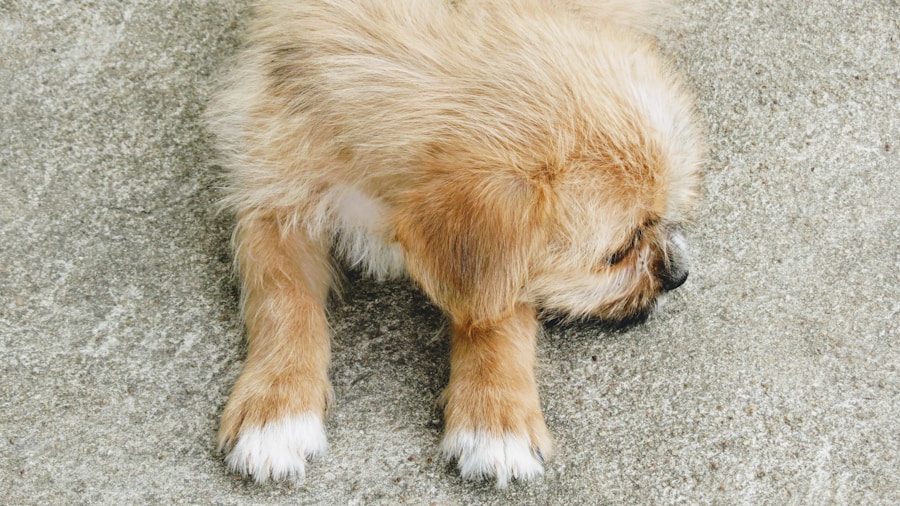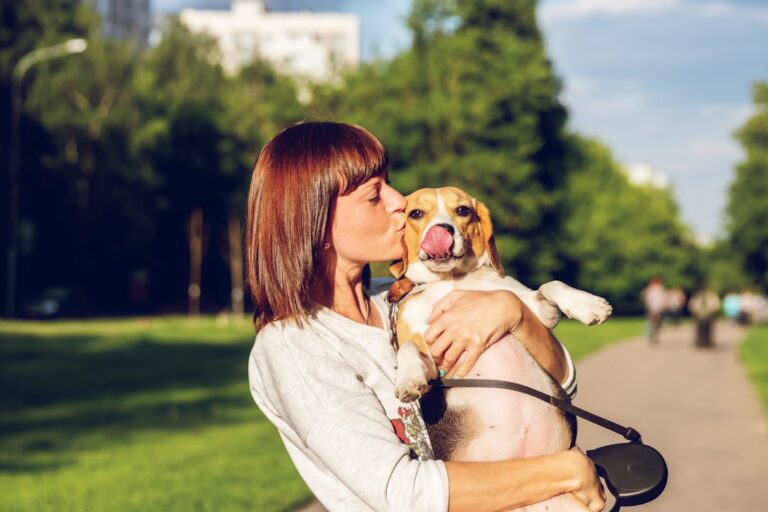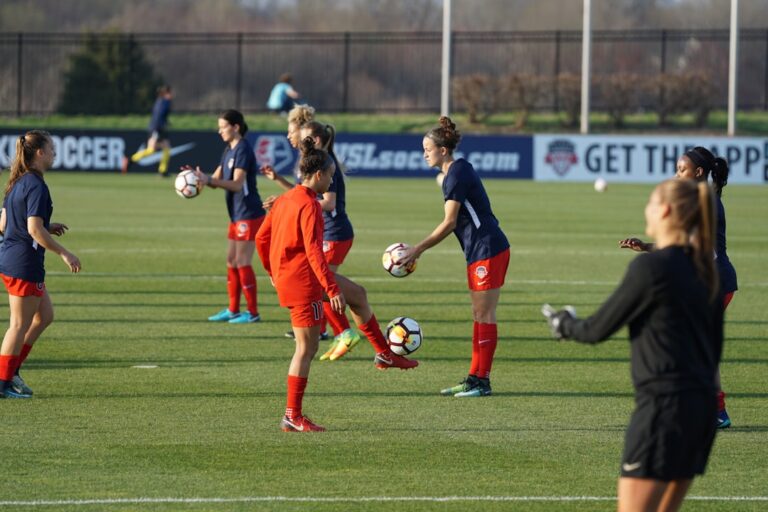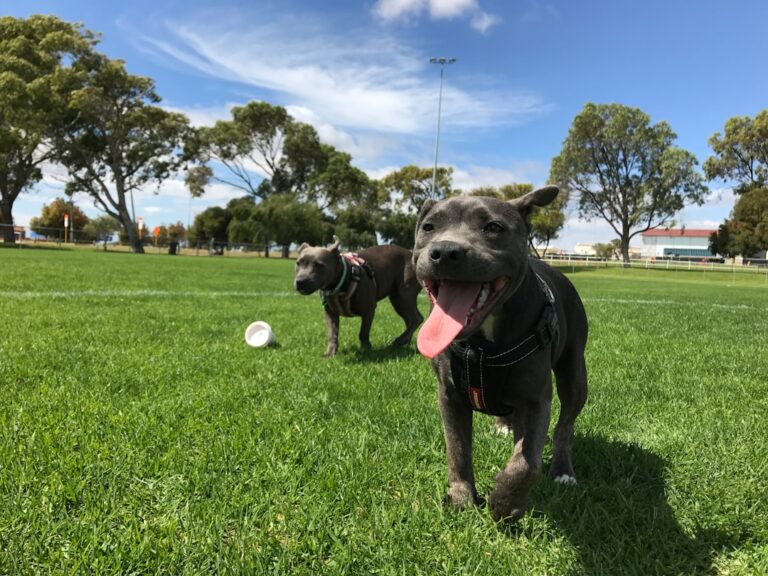Bloat, medically known as gastric dilatation-volvulus (GDV), is a serious and potentially life-threatening condition that affects dogs. It occurs when the stomach fills with gas, food, or fluid, causing it to expand. In severe cases, the stomach can twist upon itself, leading to a blockage of blood flow and the potential for tissue death.
This condition is particularly alarming because it can develop rapidly, often within a matter of hours, and requires immediate veterinary intervention. The exact cause of bloat is not fully understood, but it is believed to involve a combination of genetic, dietary, and environmental factors. The anatomy of a dog’s stomach plays a crucial role in understanding bloat.
The canine stomach is designed to expand and contract as it processes food. However, certain breeds are more predisposed to bloat due to their deep-chested conformation. Breeds such as Great Danes, Doberman Pinschers, and Boxers are particularly at risk.
The twisting of the stomach can lead to a cascade of physiological changes, including shock and organ failure, making it imperative for dog owners to recognize the signs and act swiftly.
Key Takeaways
- Bloat in dogs is a life-threatening condition that requires immediate veterinary attention.
- Common signs of bloat in dogs include a swollen abdomen, restlessness, and unproductive vomiting.
- Large, deep-chested breeds are at a higher risk for developing bloat.
- Seek veterinary care immediately if you suspect your dog is experiencing bloat.
- Prevent bloat in dogs by feeding smaller, more frequent meals and avoiding vigorous exercise after eating.
Common Signs and Symptoms of Bloat
Recognizing the signs and symptoms of bloat is essential for timely intervention. One of the most common indicators is a visibly distended abdomen. Owners may notice that their dog’s belly appears swollen or tight, resembling a drum.
This distension is often accompanied by signs of discomfort or pain; dogs may exhibit restlessness, pacing, or an inability to find a comfortable position. Additionally, they may attempt to vomit but produce little to no material, which can be a distressing sight for pet owners. Other symptoms include excessive drooling, rapid breathing, and an increased heart rate.
Dogs may also show signs of anxiety or distress, such as whining or barking. In some cases, they may collapse or become lethargic as the condition progresses. It is crucial for dog owners to be vigilant and attentive to these signs, as the window for effective treatment can be narrow.
If any combination of these symptoms is observed, it is vital to seek veterinary care immediately.
Risk Factors for Bloat in Dogs

Several risk factors contribute to the likelihood of a dog developing bloat. One of the most significant factors is breed predisposition; as mentioned earlier, deep-chested breeds are at a higher risk. However, bloat can also occur in mixed-breed dogs and those with shallower chests.
Age is another important consideration; older dogs are generally more susceptible to bloat than younger ones. Additionally, dogs that have previously experienced bloat are at an increased risk of recurrence. Dietary habits also play a critical role in the development of bloat.
Dogs that eat large meals or consume food too quickly are more likely to experience this condition. Feeding practices such as using elevated bowls or allowing vigorous exercise immediately after eating can exacerbate the risk. Stressful situations, such as changes in environment or routine, can also trigger bloat in susceptible dogs.
Understanding these risk factors can help dog owners take proactive measures to mitigate the chances of their pets developing this dangerous condition.
When to Seek Veterinary Care for Bloat
| Symptoms | Severity |
|---|---|
| Restlessness | Mild |
| Unproductive vomiting | Moderate |
| Distended abdomen | Severe |
| Rapid breathing | Severe |
| Weakness | Severe |
The urgency of seeking veterinary care for a dog suspected of having bloat cannot be overstated. If any signs of bloat are observed—especially abdominal distension or attempts to vomit without success—immediate action is required. Time is of the essence; the longer bloat goes untreated, the greater the risk of severe complications such as shock or death.
Dog owners should not hesitate to contact their veterinarian or an emergency animal clinic if they suspect their dog may be experiencing bloat. Upon arrival at the veterinary clinic, the veterinarian will conduct a thorough examination and may perform diagnostic tests such as X-rays to confirm the presence of bloat and assess its severity. Treatment will typically involve stabilizing the dog’s condition through intravenous fluids and medications before proceeding with surgical intervention if necessary.
The goal is to relieve pressure on the stomach and restore normal function as quickly as possible.
Preventing Bloat in Dogs
Preventing bloat requires a multifaceted approach that addresses various risk factors associated with the condition. One effective strategy is to modify feeding practices. Instead of providing one large meal per day, owners can opt for smaller, more frequent meals throughout the day.
This approach not only helps reduce the volume of food consumed at one time but also minimizes the risk of rapid ingestion. Additionally, using slow-feed bowls or puzzle feeders can encourage dogs to eat more slowly and reduce the likelihood of gulping air along with their food. Another preventive measure involves managing exercise routines around mealtime.
It is advisable to avoid vigorous physical activity immediately before and after feeding; instead, allow dogs to rest for at least an hour after eating before engaging in strenuous activities. Furthermore, creating a calm eating environment can help reduce stress during mealtime, which may also contribute to bloat in susceptible dogs. By implementing these strategies, dog owners can significantly decrease the risk of their pets developing this serious condition.
Treatment Options for Bloat

When a dog is diagnosed with bloat, prompt treatment is essential to prevent life-threatening complications. The initial step typically involves stabilizing the dog’s condition through intravenous fluids and medications to manage pain and reduce anxiety. Once stabilized, veterinarians often perform decompression techniques to relieve pressure from the distended stomach.
This may involve passing a tube through the mouth into the stomach or using a needle to release gas directly from the abdomen. In many cases, surgical intervention becomes necessary to correct the underlying issue and prevent recurrence. The surgical procedure often involves untwisting the stomach and securing it in place through a technique known as gastropexy.
This procedure helps prevent future episodes of bloat by anchoring the stomach to the abdominal wall. Post-operative care is crucial for recovery; veterinarians will monitor vital signs and provide supportive care as needed.
Long-Term Effects of Bloat on Dogs
The long-term effects of bloat can vary significantly depending on several factors, including how quickly treatment was administered and whether any complications arose during the episode. Some dogs may recover fully without any lasting issues, while others may experience ongoing health challenges related to their gastrointestinal system. For instance, dogs that have undergone surgery may be at risk for developing adhesions or other complications that could affect their digestive health.
Additionally, there is evidence suggesting that dogs who have experienced bloat are at an increased risk for future episodes. This underscores the importance of ongoing monitoring and preventive measures following an initial incident of bloat. Regular veterinary check-ups can help ensure that any potential issues are identified early on, allowing for timely intervention if necessary.
Supporting a Dog Recovering from Bloat
Supporting a dog during its recovery from bloat involves both physical and emotional considerations. After surgery or treatment for bloat, dogs may require a special diet that is easy on their digestive system while they heal. Veterinarians often recommend feeding small amounts of bland food initially before gradually reintroducing regular meals over time.
Monitoring for any signs of discomfort or complications during this period is crucial; owners should be vigilant about observing their dog’s behavior and appetite. Emotional support is equally important during recovery. Dogs may experience anxiety or stress following a traumatic event like bloat; providing a calm and reassuring environment can help ease their transition back to normalcy.
Engaging in gentle activities such as short walks or interactive play can also aid in their recovery while strengthening the bond between owner and pet. By being attentive to both physical needs and emotional well-being, dog owners can play a vital role in their pet’s recovery journey after experiencing bloat.











